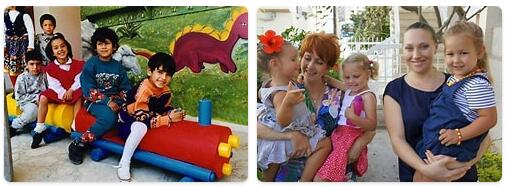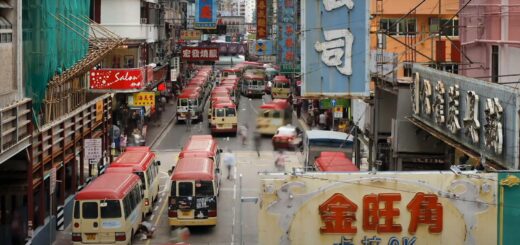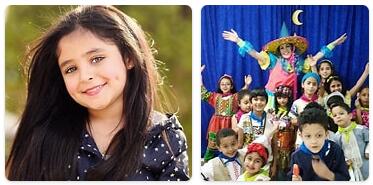Yemen Attractions
The North
Between Sana’a and Sada in the north lies the Wadi Wa’aar with a subtropical climate and endless mango, papaya and banana groves. The huge Shahara massif rises in this region. The highest mountain is 3000 m high. The Shahara Bridge, built in the 17th century, connects two mountains and can be crossed on foot.
Mokha is an ancient Red Sea port city from the Himyarite period. In the 17th and 18th centuries, coffee was exported from here all over the world. Mokha’s glory and wealth came to an end when coffee was cultivated in other regions. The port has recently been modernized and connections to Mokha improved to revitalize the ancient and once prosperous city.
Taiz is located in the south of the country at an altitude of 1400 m. The old town has been almost completely displaced by the fast-growing, modern city; only a few old houses and mosques remain. These are on the south side within the well-preserved city wall (13th century). Only the Bab Musa and Al-Bab al-Kabir gates remain to the north. The Al-Qahera Fort lies within the city walls. Taiz is also home to the Al-Ashrafiya and Al-Mudhaffar mosques, believed to be the most beautiful in Yemen. The Museum in Imam Ahmad Palace gives insights into the life of King Imam Ahmad. According to legend, after the Imam’s death nothing was changed in his »anti-revolutionary palace«. The Salah Palace, another royal family museum, is to the east of the city. The Souk Taiz is a treasure trove of beautiful goods and travel souvenirs. Mount Saber is 18 km from Taiz and offers a beautiful view of Taiz and the Taiz basin.
- Educationvv: Provides school and education information in Yemen covering middle school, high school and college education.
The West & Southwest
The semi-desert Tihama (“hot earth”) to the west, which rarely rains, is hot, muggy and sparsely populated. The road leading south from Sana’a runs through a mountainous landscape past Dhofar , the ancient capital of the Himyarites (115 BC – AD 525) and Ibb, a formerly important resting place on the road from Sana ‘a to Taiz. The remains of the city wall and the aqueduct have been well preserved . The Sumara Pass at 2700m offers a magnificent panoramic view over the Yarim and Dhamar basins.
Rawdha, 8 km north of Sana’a, is a garden city. The mosque built by Ahmed Ibn al-Qasim is worth seeing. A hotel is now housed in the Rawdha Palace.
Hajja is a day’s journey northwest of Sana’a. The surrounding area consists of high mountains and deep valleys, including Wadi Sherez (1000 m asl) and Kohlan (2400 m asl). The Hajja citadel is perched on the hill of the same name and is known for the underground dungeons.
Mount Hadda is south of Sana’a. On its slopes are numerous villages and orchards. Apricot, peach, walnut and almond trees grow here. In the village of Hadda there are old Turkish mills to visit.
Located 10 km from Sana’a, Wadi Dhar is an idyllic valley where grapes, pomegranates and citrus fruits grow.
Shibam, 36 km from Sana’a, is a pre-Islamic-era settlement protected by the large Koukaban Fort.
The Central Region
Sana’a, the capital, lies on the trade route between Aden and Mecca. The city was founded in the 1st century AD and legend has it that it played a role in biblical times. The old town has been declared a World Heritage Site by UNESCO. Most of the up to seven-story houses are over 400 years old. The citadel of Qasr al-Silah was built after the introduction of Islam in the 7th century and is very well preserved. The old city center is surrounded by the remains of the city walls, which can be seen on Zuberi Street in front of the Bab al-Yemen (Gateway to Yemen) on the south and on Mount Nugum on the east able to see. The wall stretches from the citadel to Bab Sha’oob in the north to Taherir Square. The 1000-year-old Souk al-Milh market, which begins at Bab al-Yemen, is divided into 40 different handicraft and commercial areas. The spice market is particularly interesting.
The Souk al-Nahaas used to be a copper market; today one finds embroidered headdresses, belts and jambias (curved daggers). The Grand Mosque of Sana’a is the oldest and largest mosque in Sanaa and one of the oldest in the Arab world. It was built during the lifetime of the Prophet Mohammed and enlarged in 705. The floor plan is typical of the early Arabic structures: an open courtyard is enclosed by covered galleries. The National Museum is located on Taherir Square in Dar al-Shukr (Palace of Gratitude). There are interesting exhibitions from pre-Islamic times, bronze statues, folk art and a beautiful mashrabia (for water cooling).
The multi-storey, magnificent houses in the city center, which are richly decorated with filigree stucco and
alabaster work, are overwhelming.
Amran is north of Rawdha. The city sits on the edge of the fertile Al-Bawn Basin. Amran is surrounded by ancient clay walls from the time of the Sabaean Kingdom.
Hodeida can be reached via the mountains of Manakha. This modern Red Sea city has an important port that was only completed in 1961. The fish market and the traditional wooden fishing boats are worth seeing.
Beit al-Faqih, 60km from Hodeidah, has an interesting market selling handicrafts. Located in the Haraz Mountains, Manakha was once a resting place for Ottoman traders. The traditional Ishmaeli villages lie to the east.
Sada is still walled today and was formerly a mining (iron ore) and tanning center and an important resting place on the Himyarite trade route from Sana’a to Mecca. Sada later became the capital of the Zaydi state and the center of the Zaydi doctrine, a branch of the Shia faith. The Al-Hadi Mosque is an important place of worship of Zaydism. The interesting Najran Gate is located in the north of the city. The Great Mosque is the symbol of Sada. Traditional stone collars and beautiful silver work are sold at the market. The Sada Fortress with its thick walls was formerly the residence of the King Imam and is now the seat of the provincial government. Outside of town is the Zaydi Cemetery with interesting tombstones. The Sada basin is very fertile.



